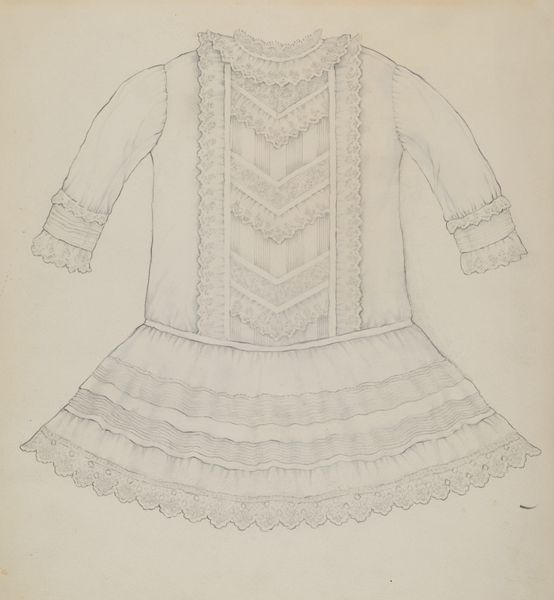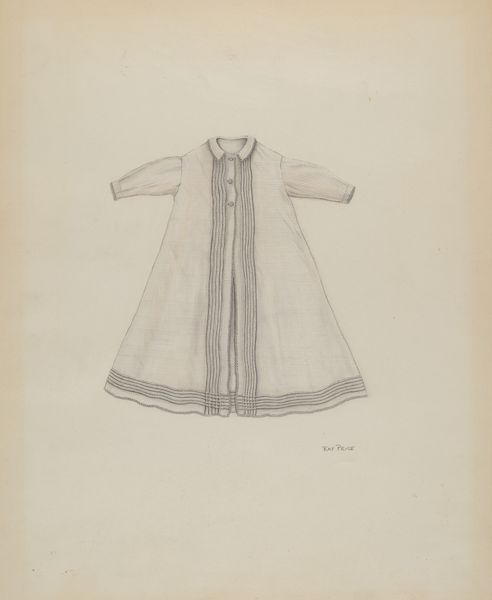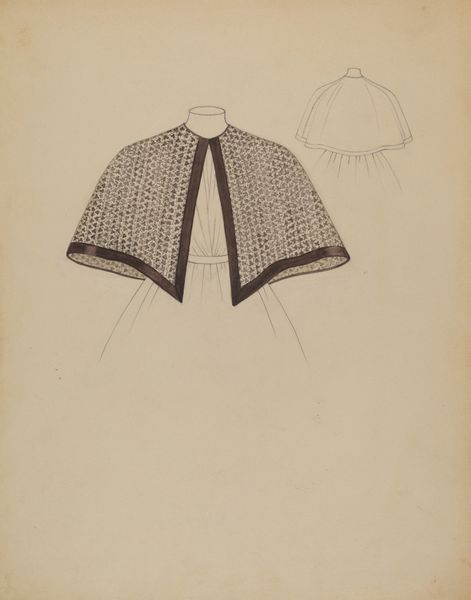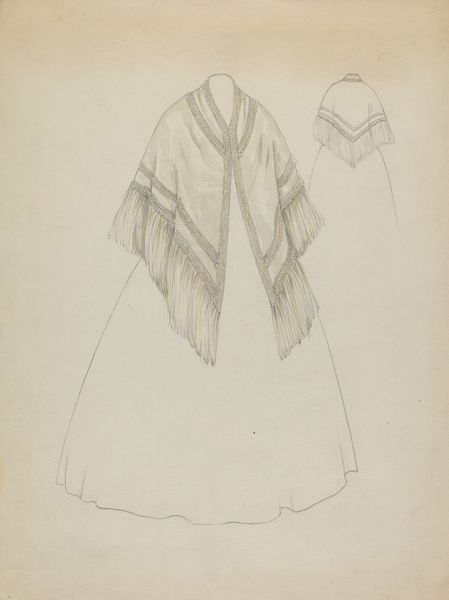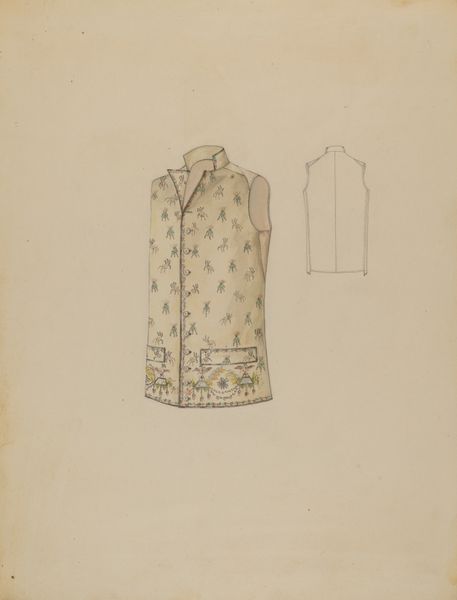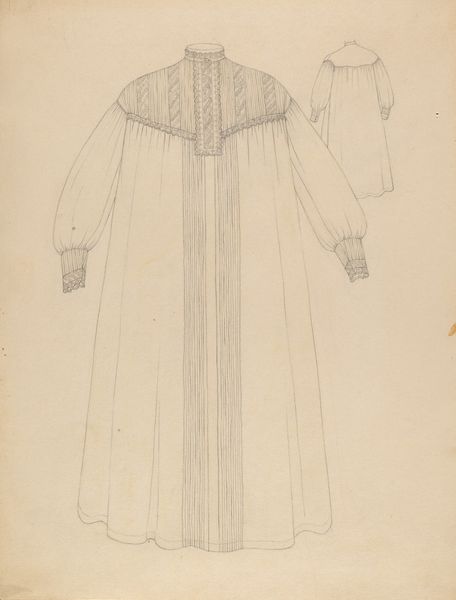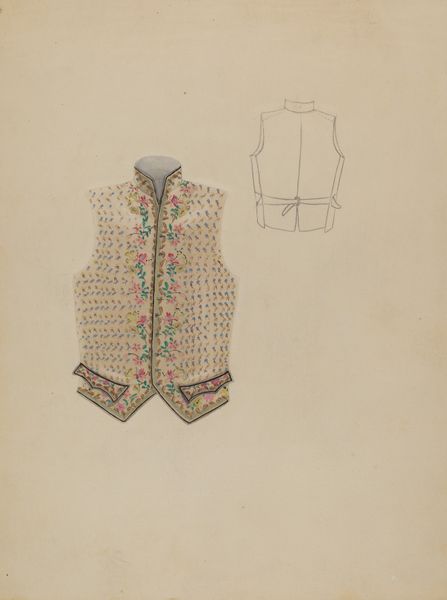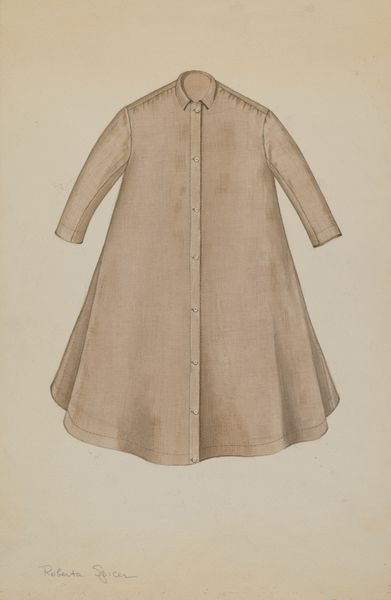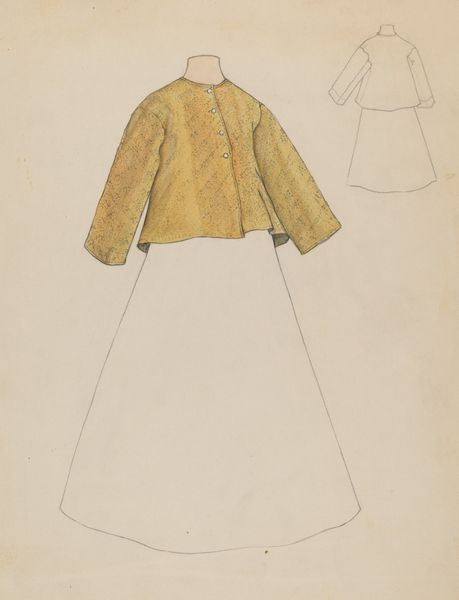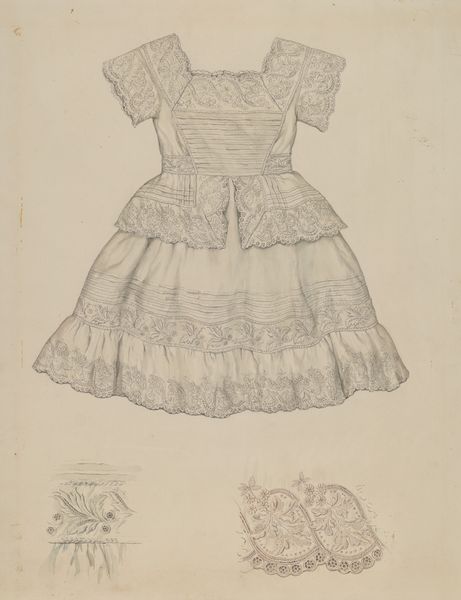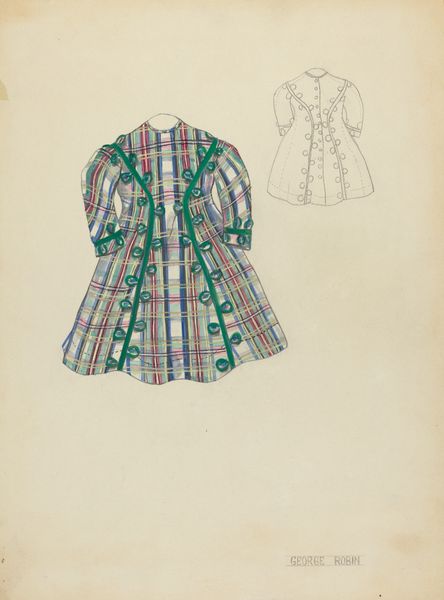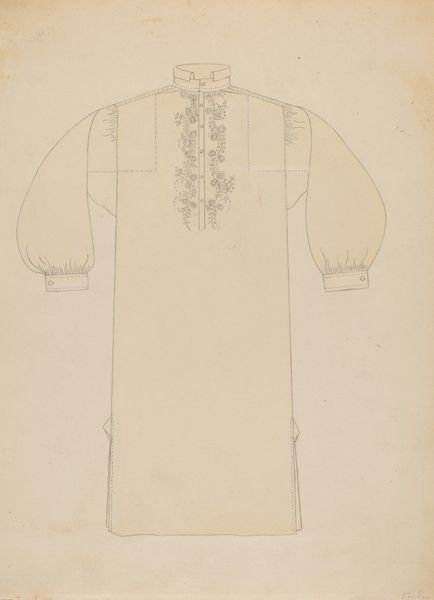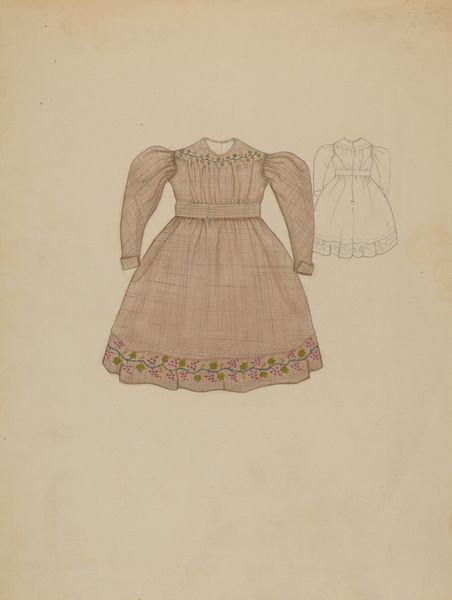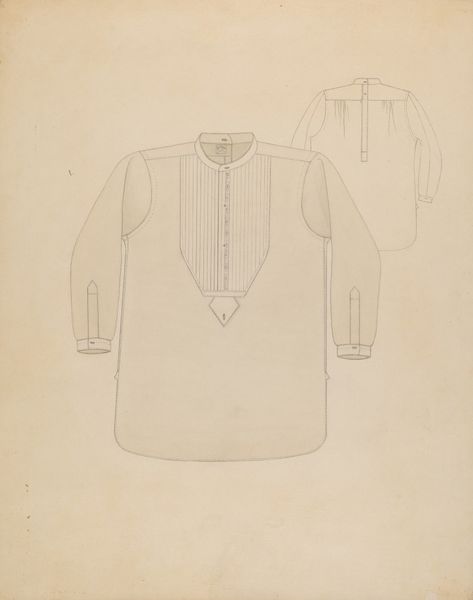
drawing, paper, watercolor
#
drawing
#
paper
#
watercolor
#
watercolor
Dimensions: overall: 35.7 x 26.5 cm (14 1/16 x 10 7/16 in.) Original IAD Object: rendering is 1/3 actual size
Copyright: National Gallery of Art: CC0 1.0
Curator: We’re looking at "Child's Dress," a watercolor and drawing on paper from around 1936, created by Gladys C. Parker. Editor: The delicacy of the lines strikes me immediately. It's almost ghostly, the way the dress seems to float on the page. And that large bow is certainly dominant. Curator: The choice of representing children's clothing provides insight into shifting societal expectations of innocence and domesticity during the interwar period. How gender roles are subtly imprinted from an early age. It makes one think about the construction of identity within prescribed parameters of clothing. Editor: Yes, and the bow itself! A traditional symbol of girlhood but rendered with a certain restraint. The diamond-shaped patterns speak to a desire for order, perhaps, within childhood itself. Think about the diamond motif in cultures signifying abundance and connection to the land. Could that be implied here, offering aspirations of material well-being for a child? Curator: It’s hard to look at this now and not think of child labor that existed in some areas during that time; a dress like this certainly highlights the stark differences between the working class and the privileged. Editor: The button-back design carries echoes of formality, a vestige from earlier eras when clothing signified class with the button often regarded as symbol for union and harmony, also a symbol of protection. But I’m particularly drawn to those meticulous fringe details. Notice how that pattern reappears, tying the entire design together with subtle continuity, like the hem around a child's dreams. Curator: Exactly. How the detailed design and rendering creates a contrast with the often-simplistic or haphazard realities of childhood. It speaks to that intersection of fantasy and materiality. Do you think this was part of Parker’s reflection on societal class systems? Editor: It absolutely speaks to the material aspiration, to which Parker connects to deeper, collective symbols that elevate this artwork beyond a mere depiction of children’s fashion. Curator: A design like this, especially during a depression, holds aspirations, societal positions, and maybe more about protection than previously assumed. Editor: The dress floats beyond fashion and enters the world of iconography.
Comments
No comments
Be the first to comment and join the conversation on the ultimate creative platform.
